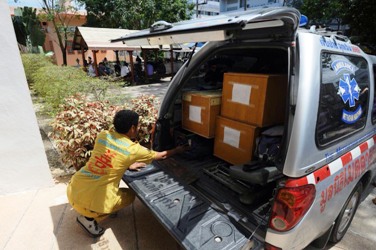Is the seemingly improved situation real or just an illusion?
The unrest situation in the Deep South has dropped out of the front pages of most mainstream newspapers and the main TV news programmes of most TV stations for the past two months with the exception of the peace talks issue.

The main reason is that the number of "big" violent incidents such as major bombings has subsided although shootings against innocent people continue unabated on almost daily basis.
Take a look at the following statistics of violent incidents. In last November, there were altogether 35 incidents which were broken down into eight bombings, nine shootings, one arson attack, 15 disturbance incidents and two other incidents. There were 34 deaths and 40 injured.
In October however, there were 39 violent incidents which were broken down into 17 shootings, eight bombings, six arson attacks and eight disturbance incidents. There were nine fatalities and 23 injured.
For the three-month period from last October to December, information from the forward command of the 4th army region showed that there were altogether 185 violent incidents compared to 426 incidents for the same period in 2013 representing 56.67 percent drop. The number of casualties have dropped to 180 (83 eaths and 97 injured) from 356 (138 deaths and 218 injured).
Some observers have suggested that the seemingly improved situation might stem partially from widespread flood in the restive region in December. But talks with various parties concerned have attributed the improvements to two main reasons – firstly, readjustment of the southern policy by the National Council for Peace and Order and the 4th army region and, secondly, the peace talks process.
Taking a closer look into the policy adjustment issue, there are four factors which are believed to have contributed to the improvement of the unrest situation.
The first factor is the realignment of security forces. Troops from the 1st, 2nd and 3rd regions have been gradually phased out of the region to just five battalions. Meanwhile, the 4th army region has taken over the task left behind by the departing troops from the other regions with the para-military rangers or militia drawn from local people becoming the main fighting force. There are now 12 militia regiments operating in the region.
However, the number of security forces in the region has not declined. There are still over 70,000 of them. These include about 32,000 troops and the militia, over 18,000 policemen and 9,600 defence volunteers.
The second factor appears to be adjustment in the development projects with more bottom-up projects instead of top-down projects.
Thirdly, more interactions between the officials and local people. Public hearings have been staged to allow the locals to air their views while attempts are stepped up by the authorities to lure back the militants.
Last year alone, altogether 1,129 suspected militants and sympathisers have turned themselves in. Of these, arrest warrants issued by virtue of the emergency law have been revoked for 681 of them.
And last but not least, the improvement of intelligence gatherings have resulted to sieges, roundups and arrests of several suspects.
The four above-mentioned factors have enabled the security apparatus to be able to keep the unrest situation under control and to scale down the violent incidents.
However, the success in bringing down the number of violent incidents does not necessarily mean that the region is approaching closer to peace. Unless the root cause or causes of the unrest are addressed, violence can always flare up anytime.
------------------------------------------------------------------------------------------------------------------------------------
Caption : Pick-up truck with the caskets in the South
